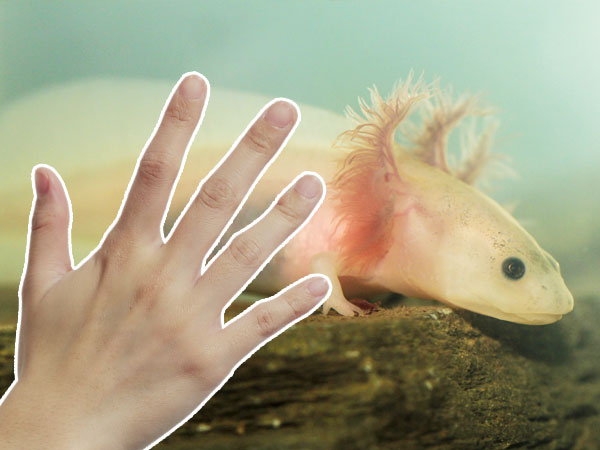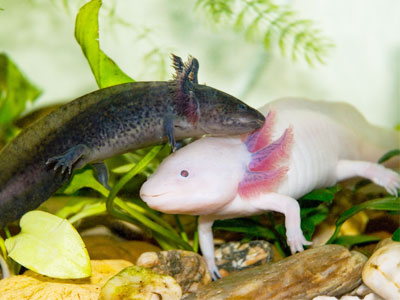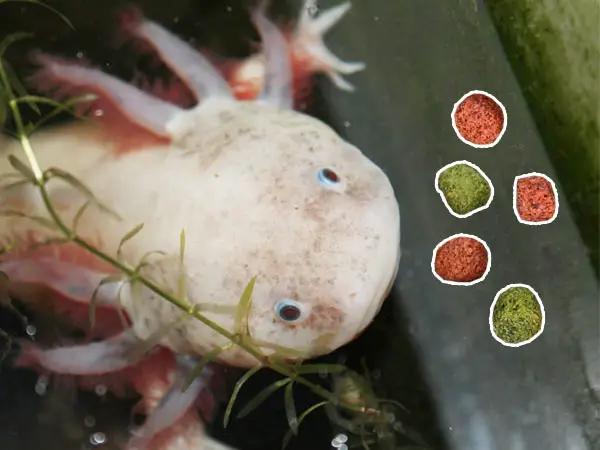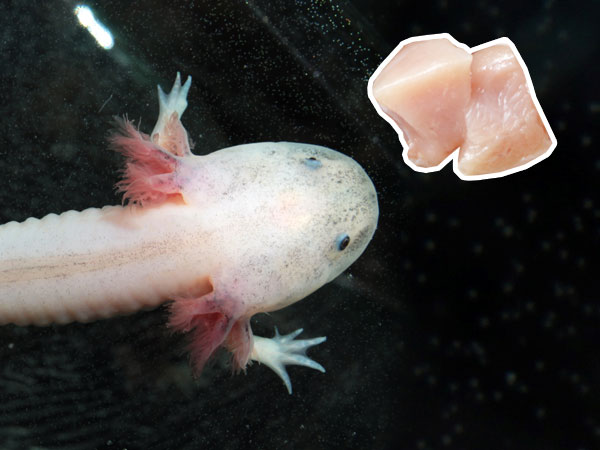Axolotls are interesting animals. They are a fairly rare occurrence in home aquarium, yet so much interest has been placed around them.

They are known for being relatively delicate animals that should not be touched that much because they don’t have the protective layer on their skin like fish do. This makes them more susceptible for various problems and even diseases if you touch them too much.
One of the most common questions axolotls’ owners and vets get is: do axolotls like to be touched?
The answer is yes, but only to an extent. If you touch the axolotls too often and hold them in your hands too much, they might get stressed quickly.
They also don’t have a protective layer over their skin like fish do, making them more susceptible for various health problems, especially if your hands are not clean.
The solution is to not touch them too often, and even if you do, do it moderately and with some precautions. You should clean your hands and be gentle to start with.
Want to know more about how and when you can touch axolotls? Read on and find out more in this article.
What should you consider when touching axolotls?
Always Wash Your Hands Before Petting Your Axolotl
The number one thing you should always remember is to always wash your hands before you pet your axolotl. You’ll find that some axolotls will crave your attention more than others, and will like it when you try to pet them.
Others might freak out and run away in terror. It might take time for them to get accustomed to you.
Always wash your hands before you touch them, though. This is because axolotls don’t have a protective layer, or a very thin one, over their skin.
And if you have dirty hands, you can easily transfer some bacteria over to their bodies, which can result in infections and various health problems.
So the best way to avoid that is to always wash your hands BEFORE and AFTER you touch or pet your axolotl. This is very important and you should remember this.
Don’t Stroke Your Axolotl
Another important thing to know is that axolotls are delicate animals. They don’t like to be stroked for longer periods like cats, for example.
As a result, they might freak out when you try to hold them for longer or try to pet them. This results in stress and anxiety of your axolotl.
Remember to always be gentle with your approach. Being too aggressive right from the start will inevitably cause your axolotl to get scared of you, which is something that might not get repaired with time.
And don’t stroke it for longer periods, either. This is due to the fact that axolotls don’t have a protective layer over their skin, resulting in them being susceptible to diseases and various skin problems that might happen when you stroke them for too long.
Remember that axolotls are delicate animals, and delicate animals need delicate treatment. Be gentle with your approach and try to hold it gently, but not for too long.
Don’t Touch the Gills and Head of Your Axolotl
The gills and the head of your axolotl are the most sensitive and delicate parts of the axolotl’s body.
Firstly, it’s because the gills are made from very delicate matter, and they can get destroyed if you touch them too strongly. And if you harm their gills, you might experience that your axolotl will get various health problems.
Secondly, you shouldn’t touch the gills because the axolotls will freak out when you do so. If you’ve ever tried this before, then you have seen this. Your axolotl will dash away as if it was struck by electricity. And this is not good – you’re increasing the stress levels in your axolotl and putting them at risk for various diseases and health problems.
Here’s what happens when you try to touch their gills.
Additionally, you should also never touch the axolotl’s head. The head is also a vulnerable part of their body, and axolotls don’t like it when you touch them on the head. They’ll get scared and will try to hide, and they might get scared of your hand, too.
How to Touch Your Axolotl?
If your axolotl is new, then it is still getting used to your and their tank. In that case, you should begin touching them very slowly.
First, start by putting the hand into the water and wait for the axolotl to touch your hand first. In some cases, the axolotl will even lay on your hand, which makes them comfortable with you and your hand.
If it doesn’t want to touch you on its own, then you can start touching it by the belly or the tail. Those are relatively safe areas for touching axolotls, but don’t overdo it.
In any case, don’t make sudden and quick movements, as the axolotl will get scared and will get stressed. They might run away and try to hide quickly. So you should try to be slow and delicate with your movement, and don’t scare them too much.
If your axolotl is not used to touching, go slow. Offer them your hand yourself and don’t force anything.
Can You Take the Axolotl Out from the Water?
No, you should not take your axolotl out of water if not necessary.
They are not used to life outside of the water as they have adapted to live in the water. They might survive for some time outside of the water, but it will be for brief periods of time.
You should not take them out of the water, though.
Conclusion
Axolotls are delicate animals that don’t like to be touched too often. They can be touched, but you should do so with a few things in mind.
The first thing is to wash your hands before you touch them, and to touch them gently. You should not be forceful – instead, offer them your hand and let them touch it first.
Hopefully, you’ll establish some trust so that axolotl will allow you to stroke it.





This was very helpful to learn about Axolotls and how to take care of them! thank you very much!! ?✨
I’m glad it was useful!